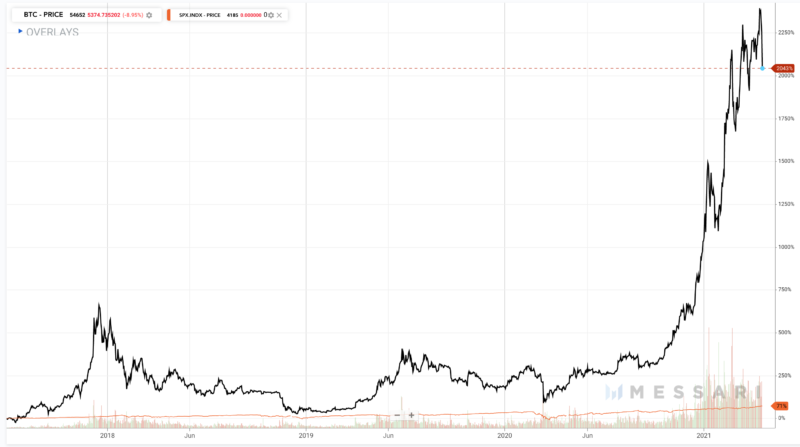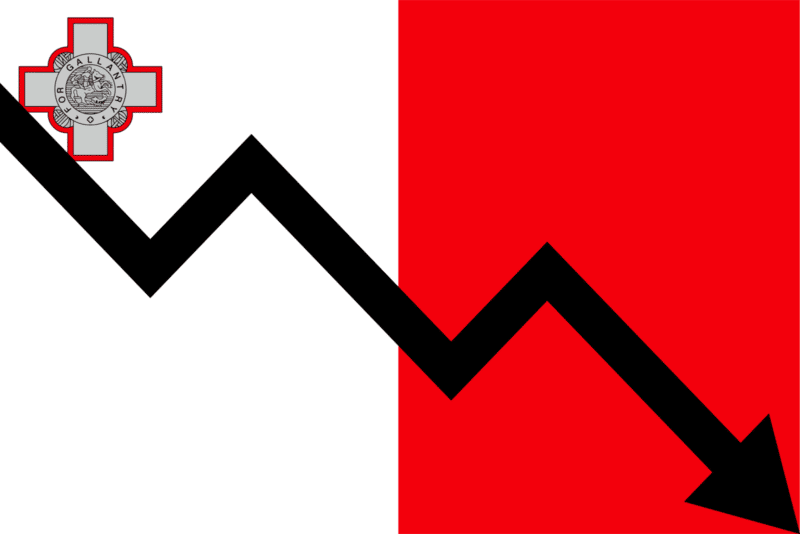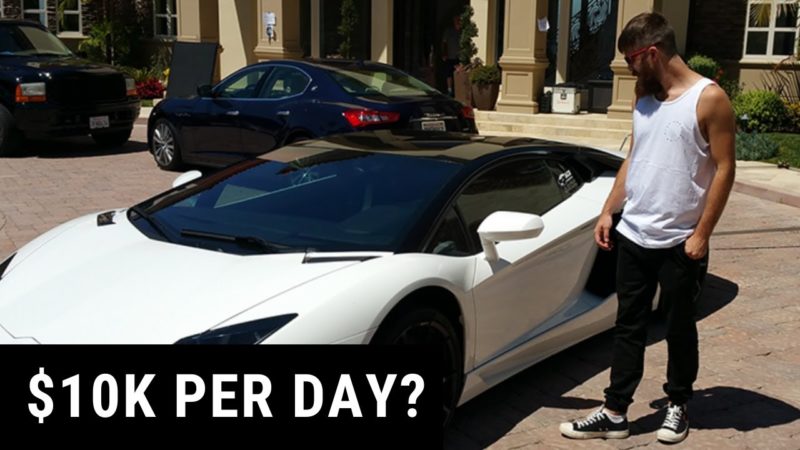
I’m the founder of an online-first community called The Good Life Collective. I started the community in 2022, and in this article, I’ll tell you the story of why and how I embarked on this journey.
First of all, who is the community for?
The Good Life Collective is a community for high-agency people who embrace a growth mindset and are focused on continually bettering themselves. We help each other to achieve breakthroughs in health, wealth, relationships and wisdom.
One of our core beliefs is that a good life can only be lived by surrounding ourselves with the right people and playing long-term games. We are not looking for an echo chamber; the only way to grow is to be open and continuously challenge our views through deep and meaningful conversations, experiences, and active knowledge-seeking.
In this article, I’ll give some background as to why I started the community and what motivates me to nurture it.
Here goes…
Why Start a Community?
But where did the idea of myself starting a community come from?
Over the past 15 years, I’ve been delving into the history of religions, civilizations, and politics, and it became apparent to me that humans thrive when they are part of some type of tribe that they are passionate about. I saw how the internet had offered us the possibility of connecting with anyone globally, but at the same time, also resulted in humans becoming more isolated in their online worlds, with depression rates and loneliness sharply on the rise in the last decade.
There had to be a new way of connecting and building tribes for the internet (metaverse?) age.
But let’s rewind a bit more and go through the timeline that brought me to the point of starting a community…
The Influence of Religion
I grew up in a very religious country, and I got exposed early on to the power of tribes that rallied behind a well-defined set of ideas and principles.
During my youth, I was pretty active in a couple of small communities under the umbrella of the local Church, and those groups were very beneficial to me in those formative years. I have many fond memories of the experiences I had and the relationships built during that period.
During my twenties, however, it became all too apparent to me that religious belief was no longer compatible with my worldview, and as I slowly exited all involvement with the Church, I also started thinking about how to recreate some of the best elements of religious life within the secular world.
The Digital Nomad and Expat Life
Apart from renouncing any notion of organized religion, I also left my country of birth (to which I had been very attached) and got married to a person who came from a pretty different culture from mine. Together we traveled extensively in a digital nomad fashion before that term was even a thing.
We eventually slowed down and decided to start building bases for the longer term, thus becoming expats. The experience of marrying into a different culture, and exposing ourselves to radically different ways of living forced me to become much more open to new ideas and experiences.
It instilled in me a deep desire to learn more about the world we live in, the people that have inhabited it over the ages, and the reasons for their behaviors. I must also mention that this period of growth and transition into becoming a citizen of the world was quite painful at times. It’s not easy to accept radically different behaviors, and you’re forced into expanding your tolerance threshold as well as reading up on various topics to try to make sense of those behaviors.
Along with religion, over the past few centuries, citizenship has been one of the most defining traits of every person.
It all started with the French Revolution and the concept of tying everyone together in a new and equal national community. Being a citizen meant more and more perks over time (think education, healthcare, jobs) and of course, some responsibilities too (like joining the army, serving on a jury, paying taxes). This was different from the usual talk about human rights – it was about making equality real and practical, not just something that sounds good on paper.
This whole idea of what it means to be a citizen – and the state’s role in it – hit its high point in the 60s and then started to lose steam. It’s still about belonging, whether you’re born into it, inherit it, or earn it by sticking around long enough. But the concept has become less substantial, you could say. Rights have been trimmed back (so long, welfare state), duties have lightened up (less tax pressure), and some are even gone for good (like mandatory military service). With the rise of the ‘every-man-for-himself’ mindset, citizenship turned into something you can trade, like a commodity. You can now buy passports from countries like Malta and Cyprus, among many others.
These days, people are also much more mobile. They move around depending on the conditions and are much more likely to date and marry people from other countries. This means that many of our children have a much weaker nationality trait than we had. I think this is a very positive thing and allows us to form richer relationships and develop a greater understanding of the world and its many cultures. However, it also means that we need to think harder about which values we want to espouse as families and communities.
Bitcoin’s Impact on My Views
At some point, I went down the Bitcoin rabbit hole and quickly understood that it was much more than an online-native currency. Indeed this was the gateway to a new way of life. It was unsurprising to see people rally behind Bitcoin with such enthusiasm, displaying the kind of fervor commonly seen within religious communities.
Perhaps the biggest lesson Bitcoin taught me was about the importance of looking at people’s incentives as well as embracing low time preference. The phrase “Don’t Trust, Verify” is very popular in the Bitcoin community and can be applied in many areas of our lives.
Connecting with People Online
While building several online businesses and enjoying success as an investor, I shared my insights and life lessons on this blog. Through my writing, I ended up developing some very deep connections with people who resonated with my writing and reached out to me to talk further and even meet up.
Although I thoroughly enjoyed these conversations, it eventually became obvious that I couldn’t possibly sustain many 1-to-1 chats over the long term, and a better solution was needed. I also found myself connecting people or wishing that we had some space to collectively think through certain ideas that arose in those 1-to-1 conversations.
Building Products and Services Community-First
The indie hacker community, which typically consists of solopreneurs who build products and services in public, has served to highlight the importance of community in the early stages of entrepreneurship. These indie hackers are very active on social media platforms like Reddit and Twitter and share their daily ups and downs. Over time they build a community that is interested in their journey and what they are building, and this gives them valuable feedback in their initial iterations, as well as ensuring they have an audience ready to buy when they launch their product to the world.
A more extreme version of the concept took place in the first NFT boom. Here we saw that community was everything. I believe this worked especially well because we were still in a Covid era and people were sorely missing their regular communities, hence the drive to find alternatives online.
Through NFT-based communities, I was able to connect with many like-minded people very rapidly. As a sidenote, they also served as an onramp to the art world, which I had previously felt distant and excluded from.
NFTs and Web3 made me realize that we might be witnessing a shift in how products and services come to market. Rather than a startup founder having a stroke of genius or systematically reading trends in certain cultures and subsequently building products to address the perceived wants and needs, we can now start with building a community first.
Once the community is formed, we next form alliances and small teams within that community and build products and services that directly address the needs of that community. Chances are that those products and services will also be valuable to thousands or millions of people who are not yet part of that community.
While the jury is out on whether the NFT way will stand the test of time, there are obvious signs that communities will be more and more important for the creation of products and services in the future.
The Network State
Ideas about online communities have been circulating and becoming more insistent and defined in the last few years, especially with the rise of NFTs, social tokens and DAOs.
But one of my favorite thinkers, Balaji Srinivasan, released an amazing book entitled The Network State in 2022 that takes things to the next level. He proposes the idea that distributed states will rival the monopoly of nation-states in the future. This is a very Bitcoin-centric and libertarian view of things, but it aligns a lot with my worldview.
Here’s a short definition of the network state as Balaji envisions it:
A network state is a social network with a moral innovation, a sense of national consciousness, a recognised founder, a capacity for collective action, an in-person level of civility, an integrated cryptocurrency, an archipelago of crowdfunded physical territories, a virtual capital, and an on-chain census that proves a large enough population, income, and real-estate footprint to attain a measure of diplomatic recognition.
Of course, there are also intermediate community setups if one does not wish to establish a full-blown new state. A startup society is what the initial community can be described as, and successive iterations and growth will determine how far along the network state model it eventually lands at. Balaji’s thinking encapsulates most of my thinking on the subject and has given me extra motivation to continue building this community and exploring the possibilities that technology is now enabling.
The Good Life Collective would most likely be described by Balaji as a startup society, which is the initial phase for building a network state. There is no necessity to go all the way to becoming a network state, a community can find its sweet spot at any point in the continuum between startup society and a full-blown network state. I might add that it remains to be seen whether the network state is even achievable. That would be one monumental milestone in human history for sure.
All these elements in my personal history led to me launching this community as an experiment, but as it gained traction I soon realized that this was something that I had an inner calling for. Hence I decided to dedicate my time towards building a community and iteratively continuing the experiment.
After looking at why I created the community, let’s delve deeper into the who, as in, who is this community for?
Who Should Join the Community?
Right from the start, it was very clear to me that I wanted to curate the membership process for the community.
Therefore I decided to seed the community with people whom I have met and who have left their mark on me and my way of thinking. I also wanted to use my judgment to make sure that every new member was a good fit with the rest of the group.
The Internet – A Noisy Place
I feel that the internet in general has become an extremely noisy space. Giving a voice to everyone turns out to be pretty chaotic, and we all tend to waste too much time on people spouting nonsense that we shouldn’t be reading in the first place, let alone engaging with.
Secondly, even in communities that are focused on specific topics, it is still a struggle to keep a cohesive conversation going, and discussion often degenerates into noise and filler talk.
Real Names – Real People
One of the pillars of the community is openness, members must be comfortable letting the rest of the group know their real names, professions, interests, locations etc. Again, while there is a time and place for anonymous accounts on the web, I wanted my group to be an intimate place where people can feel comfortable knowing who they are sharing their thoughts with. This has fostered a very open environment where people are not afraid to discuss sensitive topics or personal issues that others might help them with.
The value you gain is directly related to how much you participate in the conversations. It has been my experience that the more you give, the more you get in return.
Freedom to Speak Your Mind
We are currently living in a world where political correctness and virtue signaling have become extremely important drivers of behavior, both online and offline. People get offended at the drop of a hat, and as a result, it’s become hard to get honest and hard-hitting conversations going. I wanted to hang out in a community where people can speak their minds without any fear.
Avoiding the Echo Chamber
The challenge with having a gatekeeper is avoiding creating an echo chamber.
The solution to the echo chamber problem, as I discovered, is to have people who have a shared set of core values and a specific mindset.
Balaji’s idea is that a society should have one commandment that is shared among all members.
Once we all share the same mindset and values, there is no problem with unnecessary conflict, while at the same time, there is enough flexibility to discuss topics where we can individually have wildly different opinions. The fact that the underlying mindset and values are the same enables us to speak freely about our differing opinions while keeping an open heart and mind to what others are saying.
To illustrate via an example, you can have a community that has a growth mindset and whose core belief is that “Bitcoin is the best form of money known to man”. While promoting fiat money versus Bitcoin is bound to cause issues within that community, there would be no problem with a discussion on, say, alcoholic beverages. You could have people discussing their passion for wines while others might be teetotallers, and there is no issue because the merits and demerits of alcohol consumption are not a core belief of the community.
So far, even though the chat channels are very active and a very wide range of thorny topics have been discussed, we haven’t yet had a significant conflict arise between members. I am convinced that the shared values and mindset are what enable this.
Is all this resonating with you? Apply to join the Good Life Collective here.
How to Start and Run a Community
Running a community is not an easy task, and you need to have very clear ideas on what you want from that community. On the other hand, a digital-first community gives you quite some flexibility in refining the scope over time. We are also lucky to have a plethora of tools designed specifically for running communities, while more mainstream and traditional tools like WordPress can also be adapted for most communities’ needs.
Chat Platform
The platform choice for building a chat-based community right now lies between two very successful applications: Telegram and Discord.
Discord
While I like the way a server can be organized and divided into various channels, Discord remains a niche tool with its own reputation, and in its current incarnation is not an ideal solution for a community unless it’s a community that falls into the gaming/crypto niche.
Telegram
Chat apps like Whatsapp and Telegram are more mainstream and straightforward. Telegram is better for communities than Whatsapp in my opinion, and most people I know already have their Whatsapp in a cluttered state. So Telegram offers a clean alternative to Whatsapp that most people who have used Whatsapp will find intuitive to use.
Website
The GLC website includes a member directory, recommended resources, upcoming events and other useful tools. I chose to build the site with WordPress since I’m very familiar with the system and it’s probably the most flexible one out there, giving me the agility to pivot features if necessary.
Mobile App
One downside of chat-based apps like Telegram is that announcements and important conversations get lost over time. That is why we are now building a mobile app that will house important announcements, polls and frequently used resources for easy access. The ability to use push notifications could also be very important.
Community Size
Group size is an ongoing experiment and I don’t have any big conclusions so far. At around 50 members it still feels very cozy and manageable, but I’m curious to see how that will change when/if we hit bigger numbers. One other benefit of the curated membership process is that we don’t have a sudden influx of new members. I can sustainably add members and take corrective action if we see that the chat is getting out of hand or if any other problem has been created due to bigger numbers.
IRL Meetups
I am a big believer that there is tremendous value in connecting with people in real life. I’m certainly not a fan of Zoom meetings with people that matter to me. Online meetings have their place and are a blessing in the work context, but I will always prefer meeting people face-to-face when I want to have a deeper experience with them. I also want to be able to share real-life experiences with my circle of friends, such as a good meal, a sunset, playing some sport, or enjoying time with our families and kids playing together.
For this reason, we are putting a lot of effort into IRL meetups during the year where we can get together and strengthen our bonds of friendship and have deeper conversations are encouraged.
In 2022 we had our main meetup in Barcelona, where 7 international families got together. It was amazing to see how smoothly things went, especially considering the number of young children present and the fact that most of the people were meeting each other for the first time. The feedback was great and I was impressed that we had zero issues during the whole weekend. To me, this was a sure sign that we have the right kind of people in the community. It was lovely to see the kids all playing together happily, as one of my main ideals is to give memorable experiences to our kids that they can remember and build upon as they grow older.
We also held a retreat in Montserrat, which was a much more intimate experience; only three members joined this time round. We spent 5 days together, working on our own stuff while also spending a lot of time walking in nature and discussing topics that came to mind. I like doing retreats of this sort and undoubtedly this is something we can expand on in the future.
I hope that we can also use these occasions to travel to new places and explore the world, in so doing also broadening our consciousness and understanding of world culture.
Conclusions so Far
The community has been a great success so far, and I am very excited about working to induct more members and add more value.
The initial injection of funds through the yearly membership will help build a pool of capital that can be used to start building things like a website, and has definitely motivated me to think up further things that can be done further down the line.
Here are some things I am thinking of implementing in the near future:
- Small Mastermind groups.
- Access to premium content on the website, curated lists, and a member directory.
- Monthly group calls around a specific topic.
- Periodic newsletter highlighting topics discussed and some other extras.
- Further research and a report on certain topics discussed in the chat.
- Events: retreats and city meetups.
Interested in joining the community or discussing the topic? Apply here.
Are you also experimenting with network states, startup societies, and online communities? Drop me a line, I’d love to hear about your experience. You can also leave a comment below.











